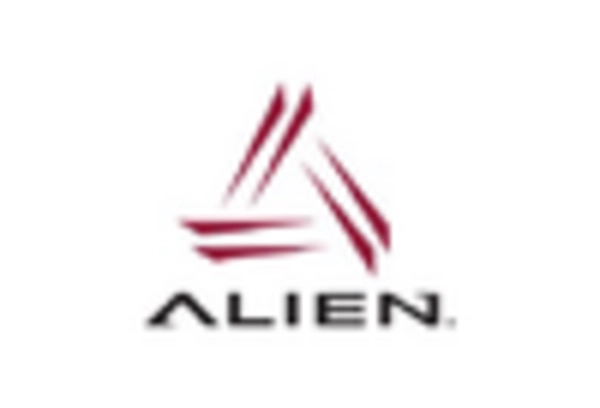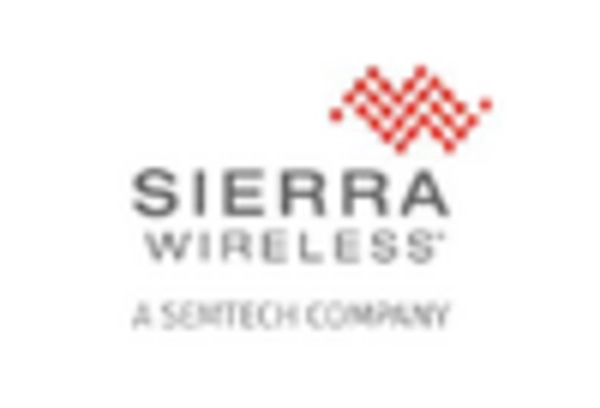Regulatory Support and Compliance
The Long-range Identification and Tracking Market is significantly influenced by regulatory support and compliance requirements. Governments and international organizations are implementing stringent regulations to enhance safety and security in various sectors, including transportation and logistics. For instance, regulations mandating the use of tracking systems for hazardous materials and high-value goods are driving the adoption of long-range identification technologies. This regulatory landscape not only ensures compliance but also fosters innovation within the industry. As a result, companies are increasingly investing in advanced tracking solutions to meet these regulatory demands, which is expected to propel market growth in the foreseeable future.
Growing Demand for Supply Chain Transparency
The Long-range Identification and Tracking Market is witnessing a growing demand for supply chain transparency, driven by consumer expectations and corporate responsibility. Companies are increasingly required to provide visibility into their supply chains, ensuring that products are sourced ethically and sustainably. This demand is pushing organizations to adopt long-range identification and tracking solutions that offer real-time insights into product movement and provenance. According to industry reports, the market for supply chain visibility solutions is anticipated to reach several billion dollars by 2026, reflecting the critical role of tracking technologies in enhancing transparency and accountability within supply chains.
Rising Security Concerns and Threat Mitigation
The Long-range Identification and Tracking Market is increasingly shaped by rising security concerns and the need for threat mitigation. As incidents of theft, fraud, and terrorism continue to pose challenges across various sectors, organizations are prioritizing the implementation of robust tracking systems. These systems not only help in monitoring assets but also play a crucial role in ensuring the safety of personnel and goods. The market for security-focused tracking solutions is expected to grow substantially, with projections indicating a rise in demand for technologies that offer enhanced security features. This trend underscores the importance of long-range identification and tracking technologies in addressing contemporary security challenges.
Technological Advancements in Tracking Systems
The Long-range Identification and Tracking Market is experiencing a surge in technological advancements that enhance tracking capabilities. Innovations such as satellite-based tracking systems and advanced sensor technologies are becoming increasingly prevalent. These advancements enable real-time data collection and analysis, which is crucial for various applications, including logistics and supply chain management. The integration of artificial intelligence and machine learning into tracking systems is also noteworthy, as it allows for predictive analytics and improved decision-making. According to recent estimates, the market for advanced tracking technologies is projected to grow at a compound annual growth rate of over 15% in the coming years, indicating a robust demand for sophisticated tracking solutions.
Increased Investment in Logistics and Transportation
The Long-range Identification and Tracking Market is benefiting from increased investment in logistics and transportation infrastructure. As e-commerce continues to expand, companies are seeking efficient ways to manage their logistics operations. Long-range identification and tracking technologies are essential for optimizing delivery routes, reducing operational costs, and improving customer satisfaction. Investments in smart logistics solutions, including automated tracking systems, are projected to rise significantly, with estimates suggesting a market growth of over 20% in the next few years. This trend indicates a strong commitment from businesses to leverage tracking technologies for enhanced operational efficiency.















Leave a Comment